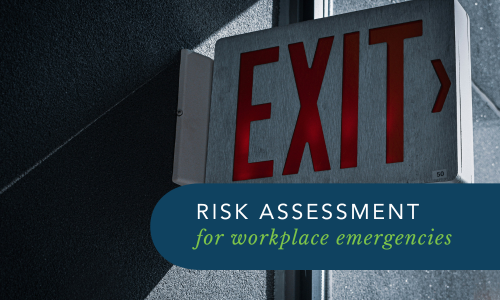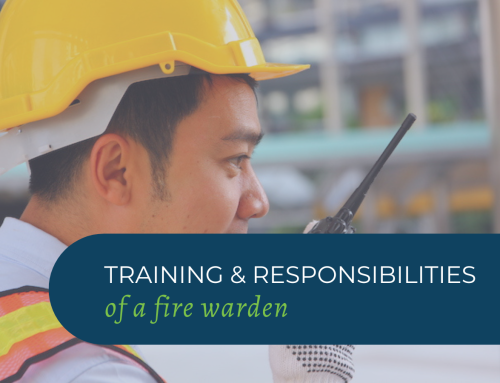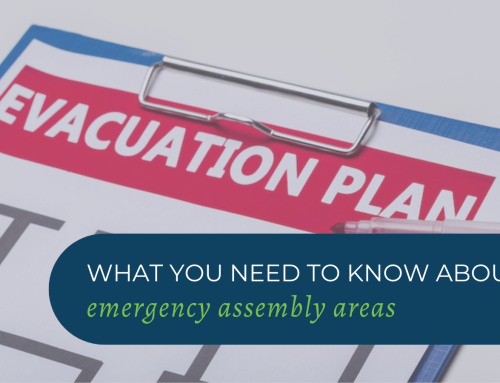Ensuring the safety and well-being of employees is paramount in the workplace. One of the critical components of a robust safety strategy is conducting thorough risk assessments for workplace emergencies. These assessments are not mere formalities; they are essential practices that can mean the difference between chaos and order, injury, and safety, or even life and death.
Here’s why risk assessments for workplace emergencies are essential:
Identifying Potential Hazards
The primary goal of a risk assessment is to identify potential hazards that could lead to emergencies. Whether it’s fire hazards, chemical spills, electrical failures, or natural disasters, recognizing these hazards allows organisations to put preventive measures in place. By systematically analysing the workplace, employers and workers can uncover hidden dangers that might otherwise go unnoticed until it’s too late.
Creating a Safer Work Environment
Risk assessments contribute significantly to creating a safer work environment. By understanding and mitigating risks, companies can reduce the likelihood of accidents and emergencies. This proactive approach not only protects employees but also minimizes potential disruptions to business operations, fostering a more stable and productive workplace.
Enhancing Employee Morale and Trust
Employees who feel safe and secure in their workplace are more likely to be satisfied and productive. Conducting regular risk assessments demonstrates that an organisation values its employees’ well-being, which can boost morale and build trust. This, in turn, can lead to higher levels of engagement and loyalty among the work force.
Effective Emergency Preparedness and Response
A well-conducted risk assessment informs the development of effective emergency preparedness and response plans. By understanding the specific risks present in the workplace, organisations can tailor their emergency procedures, ensuring that employees know exactly what to do in case of an emergency. This preparedness can significantly reduce panic and confusion, leading to more orderly and effective responses.
Protecting Life and Health
At its core, the most compelling reason for conducting risk assessments is the protection of human life and health. Employees safety should be a top priority. By identifying and mitigating risks, organisations can prevent injuries, illnesses, and fatalities, fostering a caring and responsible workplace culture.
Minimising Financial Losses
Emergencies can be financially devastating. Beyond the immediate costs of damage and disruption, companies may face long-term financial consequences, including increased insurance premiums, legal costs, and loss of reputation. Risk assessments help in mitigating these financial risks by preventing emergencies from occurring in the first place or by ensuring a swift and efficient response if they do.
Compliance with Legal Requirements
There is legislative and regulatory requirements place upon businesses to conduct regular risk assessments. Failure to comply can result in severe penalties, including fines or even shutdowns. Conducting risk assessments ensures that organisations meet their legal obligations, thereby avoiding legal repercussions and promoting a culture of safety.
Risk assessments for workplace emergencies are not just a regulatory requirement; they are a fundamental aspect of responsible and proactive business management. By identifying potential hazards, ensuring legal compliance, and preparing effectively for emergencies, organisations can protect their employees, minimize financial losses, and maintain smooth operations. Finally, a commitment to regular risk assessments fosters a culture of safety and care, which benefits everyone involved.
Workplace risk assessments for emergencies in Australia are governed by both federal and state-specific regulations. Most states and territories have adopted the model Work Health and Safety (WHS) laws, developed by Safe Work Australia, though with some variations. Here are the requirements for each state and territory:
VICTORIA
- Act: Occupational Health and Safety Act 2004
- Regulation: Occupational Health and Safety Regulations 2017
QUEENSLAND
- Act: Work Health and Safety Act 2011
- Regulation: Work Health and Safety Regulation 2011
WESTERN AUSTRALIA
- Act: Work Health and Safety Act 2020
- Regulation: Work Health and Safety (General) Regulations 2022
SOUTH AUSTRALIA
- Act: Work Health and Safety Act 2012
- Regulation: Work Health and Safety Regulations 2012
TASMANIA
- Act: Work Health and Safety Act 2012
- Regulation: Work Health and Safety Regulations 2012
AUSTRALIAN CAPITAL TERRITORY
- Act: Work Health and Safety Act 2011
- Regulation: Work Health and Safety Regulation 2011
NEW SOUTH WALES
- Act: Work Health and Safety Act 2011
- Regulation: Work Health and Safety Regulation 2017
GET IN TOUCH
Are you ready for peace of mind that your workforce is as safe and prepared as possible?
With a dedicated team of staff ready to help you meet compliance requirements and improve the overall safety of your workplace, all you need to do is get in touch.
Request your free audit today!



